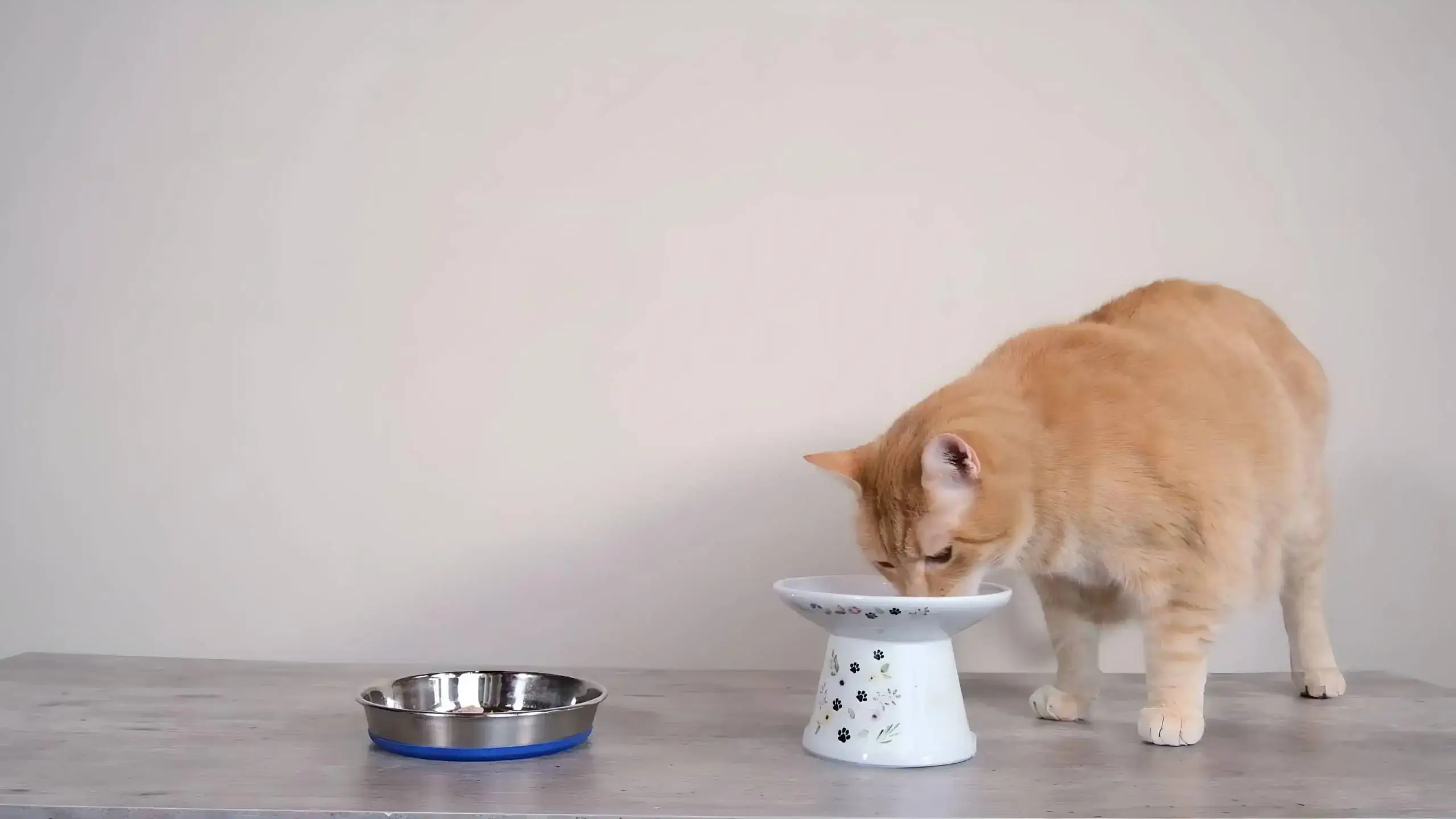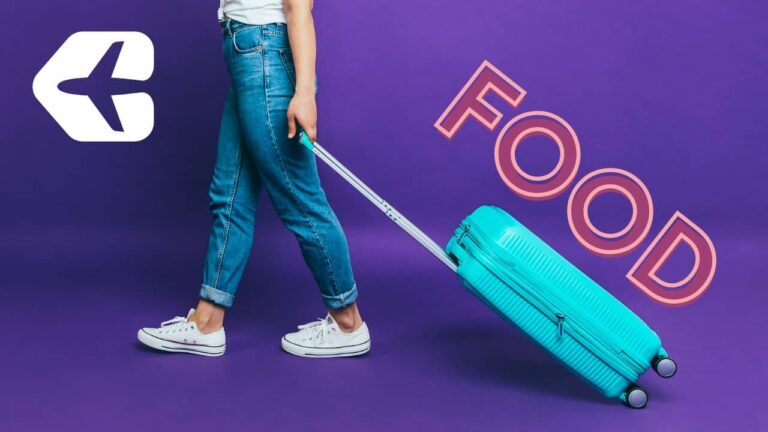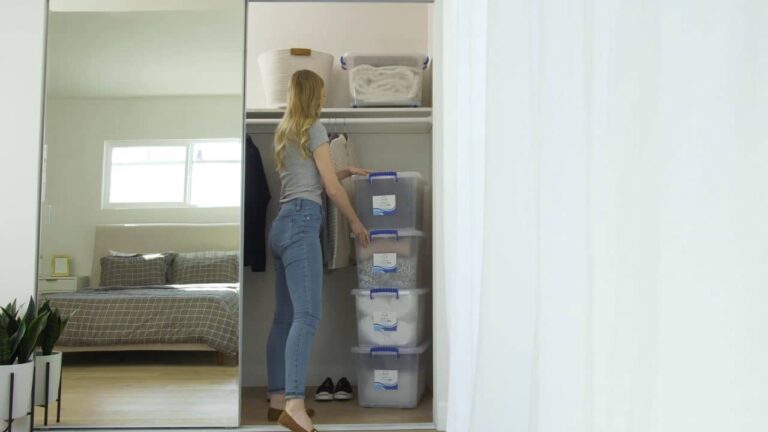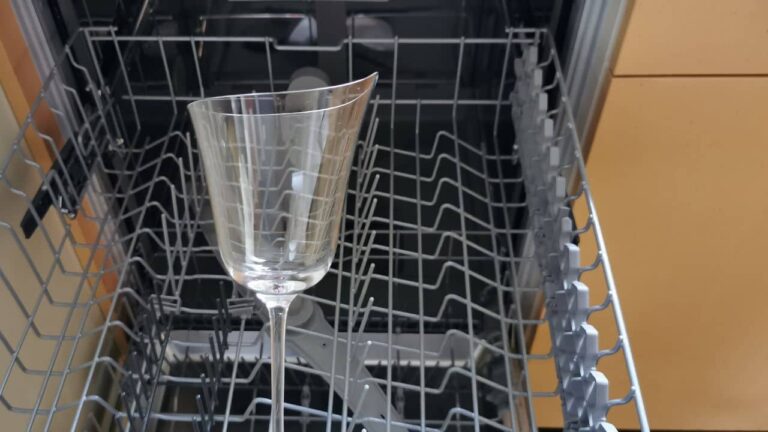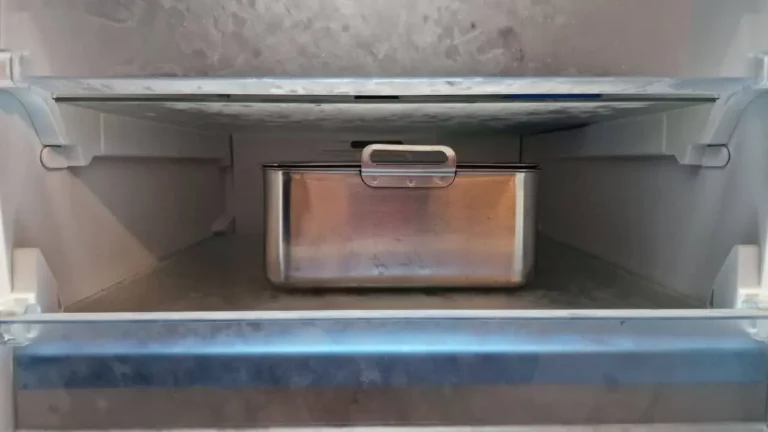How to Choose the Right Cat Bowl (Solved & Explained)
Choosing the perfect cat bowl might not be something you’ve given much thought to before, but it’s actually a more significant decision than you might expect. Just as we have our preferences for dinnerware, our feline companions also benefit from bowls tailored to their unique needs, preferences, and health conditions.
So, what are the essential considerations when selecting a cat bowl? Here they are:
1. Material and odor: The bowl’s material should be easy to clean and must not absorb odors, ensuring the bowl maintains a fresh smell.
2. Non-slip: The bowl should feature a non-slip design, preventing the cat from moving it around.
3. Shape and size of the bowl: The bowl’s edge should be as flat as possible, and its circumference sufficiently broad so that the cat’s sensitive whiskers do not brush against the sides.
Remember, considering these factors when choosing a cat bowl can significantly impact your feline friend’s eating experience, and in turn, their health and happiness.
Now, I’m going to dive deeper into these considerations, giving you all the nitty-gritty details to help you pick out the absolute best cat bowl for your fluffy companion.
The Ultimate Guide to Selecting the Perfect Cat Bowl
Under this guide, I’ll walk you through each consideration in detail, ensuring you’re well-equipped to make the best choice for your cat’s bowl.
Types of cat bowls
Choosing the right cat bowl for your feline friend involves several factors, one of the most important being the bowl’s material. In this section, I will explore different types of materials, their advantages and disadvantages, especially concerning their ease of cleaning and odor retention.
Stainless steel
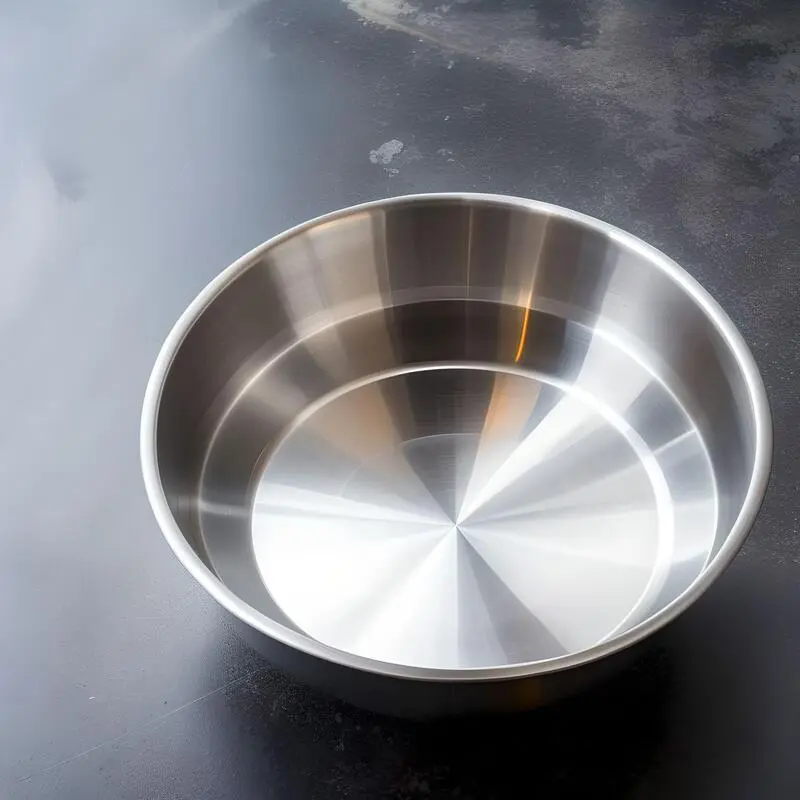
Stainless steel cat bowls are a common favorite because of their durability and hygiene. They’re dishwasher-safe, easy to clean, and resist scratches. Importantly, they don’t retain odors or harbor bacteria as some other materials might. On the flip side, they can be a bit noisy if your cat likes to push their food around, and some cats might dislike the smell of metal.
Having discussed the stainless steel material in detail, it’s clear why it’s considered the best for storing food. Its hygienic properties and resistance to odors help to keep your cat’s meals fresh and appetizing.
Ceramic

Ceramic cat bowls offer a stylish and hefty alternative that’s difficult for your cat to push around or tip over. They’re also dishwasher-safe and less likely to harbor bacteria. However, ceramic can chip or break if dropped. Some cheaper ceramics may have a porous surface, which can retain bacteria and odors if not cleaned thoroughly.
Having examined the ceramic material, it’s evident why this is also a great alternative for storing food. Its hard-wearing nature and ability to resist odors make it a stylish yet practical choice for keeping your cat’s meals fresh and inviting.
Plastic

Plastic cat bowls are lightweight, budget-friendly, and come in a variety of colors and designs. However, over time, they can become scratched and harbor bacteria, potentially leading to health issues like feline acne. They might also retain food odors, which could put off your cat. Furthermore, some cats might develop allergies to plastic materials.
Glass

Glass cat bowls offer a non-porous and non-toxic option. A shallow, wide glass bowl can prevent whisker fatigue and is easy to clean, thereby reducing odor retention, thanks to its dishwasher-safe properties. The downside is that glass bowls can break if dropped and might be more expensive than other material options.
Silicone
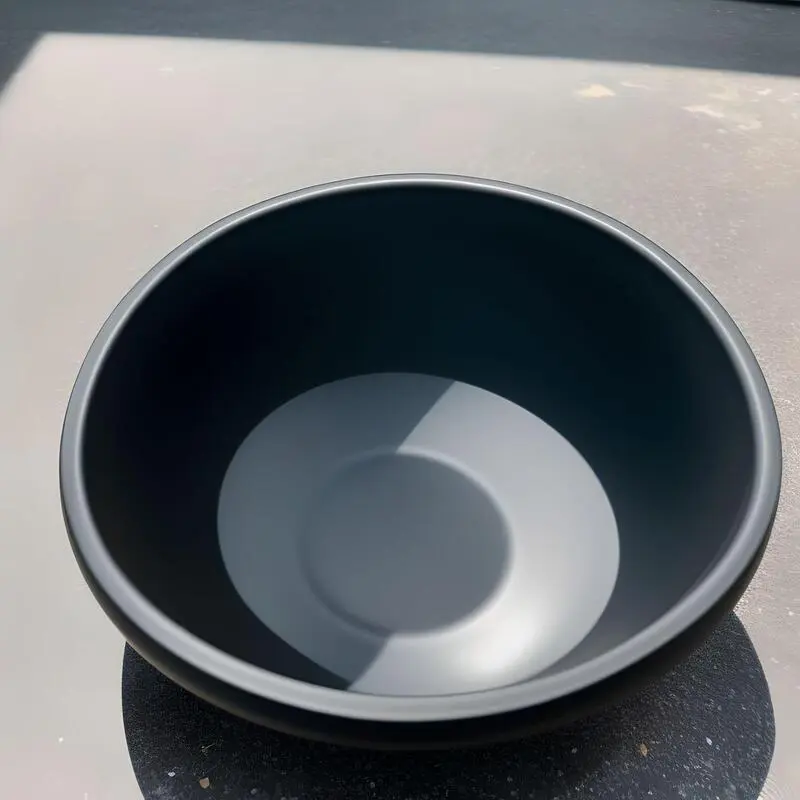
Silicone cat bowls are a modern option offering flexibility and durability. They’re easy to clean and can be collapsible for convenient storage or transportation. However, their lightweight nature might allow your cat to push them around or tip them over during mealtime.
The ideal cat bowl material for your feline friend will depend on various factors, including durability, hygiene, budget, and your cat’s personal preferences. Take the time to weigh each material’s pros and cons concerning cleanliness and odor retention before making your decision.
Personally, I find that stainless steel, ceramic, and glass bowls are my top choices for my cat due to their excellent hygienic properties and minimal odor retention.
Pros and cons: navigating cat bowl material choices
| Material | Pros | Cons |
|---|---|---|
| Stainless Steel | Indestructible material. Very hygienic. Easy to clean. Smooth surface. | The mirror effect of the material can be disturbing. |
| Ceramic | Hygienic. Easy to clean. Smooth surface. Stable. | Can easily be broken and injure the cat. |
| Plastic | Easy to clean. Smooth surface. Often non-slip on the bottom. Lightweight. | Can absorb odors. The material can become porous over time. |
| Glass | Non-porous and non-toxic. Easy to clean. Stable and hard to tip over. | Fragile and can break. Can be more expensive. Heavy, making it difficult to move often. Can change temperature based on the environment. |
| Silicone | Durable and flexible. Easy to clean. Collapsible for easy storage. | Less stable due to light weight. May retain odors. Not as scratch-resistant. |
The importance of a non-slip bottom in cat bowl
When it comes to mealtime, the last thing I want—and I’m sure it’s the same for you—is for my cat’s bowl to slide around on the floor. That’s why selecting a cat bowl with a non-slip bottom is so crucial; it helps keep the bowl in place, preventing unnecessary spills and messes.
Several cat bowls on the market feature a rubber or silicone base, designed to minimize the risk of sliding on smooth surfaces. This feature is especially beneficial if your cat is an eager eater who enjoys pushing their bowl around during meals. It’s an important detail to consider if you want your feline friend to dine peacefully without having to chase a sliding bowl across the kitchen floor.
So, don’t forget to check the bottom when picking your cat’s bowl—your floors (and your sanity) will thank you!
Selecting the right size and shape
Just as important as material and stability, the size and shape of your cat’s bowl can significantly influence their dining experience and overall well-being.
Size matters: let’s figure it out together
When I’m on the hunt for the perfect cat bowl for my whiskered companion, I don’t underestimate the importance of the bowl’s size. You might be wondering, “How do I determine the best size?” Well, it primarily depends on your cat’s appetite and their size.
Think about it: a tiny kitten probably won’t need as large a bowl as a fully grown adult cat, right? It’s crucial to have a bowl that comfortably holds enough food and water for your kitty’s needs. And if life has you running in and out, a bowl with a larger capacity could be a lifesaver.
Here’s a handy tip for you: try to find a bowl that can store enough water for your cat to drink for at least 24 hours, ideally 36 to 48 hours. To put it into perspective, cats usually drink 20 to 40 ml of water per pound of their body weight daily, so a 10-pound cat would be thanking you for a bowl that can hold around 3 cups of water.
Shape up your cat’s dining experience
Now let’s talk about the shape. Yes, the shape of the cat bowl matters, and here’s why:
Whisker fatigue: Have you ever heard of whisker fatigue? It’s a discomfort or sensitivity some cats experience when their whiskers touch the sides of the bowl. To avoid this, wide and shallow bowls can be your cat’s best friend.
Stick with me as we’re about to delve deeper into this subject, and I’ll show you how the right bowl choice can help manage whisker fatigue in your cat.
Neck strain: Depending on your cat’s facial structure, a shallow or deeper bowl might be more comfortable for them. It’s something worth considering to reduce the risk of neck strain.
Digestive issues: It might surprise you, but some cats can develop gastrointestinal problems if their bowl is too deep. A shallow, wide bowl can promote proper eating posture, assisting in digestion.
Remembering these factors, my personal preference leans towards cat bowls that are both wide and shallow. These bowls tend to fit a range of cat sizes and help prevent common problems like whisker fatigue and neck strain. So, when you’re out shopping for the right bowl, keep these points in mind.
By ensuring the size and shape of your cat’s bowl are spot on, you’re paving the way for a more enjoyable and comfortable eating experience for your furry friend. They might not say it, but trust me, they’ll be purring their thanks!
Tackling Whisker Stress and Fatigue – A Cat Owner’s Duty
Are you noticing signs of discomfort in your cat during mealtime? If so, their whiskers might be to blame. As crucial sensory tools for cats, whiskers help them understand their surroundings.
However, constant contact with the sides of a food or water bowl can cause what’s known as whisker stress or whisker fatigue. It’s our responsibility as cat parents to ensure their mealtime is stress-free.
You may be wondering, “How can I make a difference?” Well, the answer lies in choosing a bowl that is wide enough or has a flat surface, preventing your kitty’s whiskers from touching the sides when they eat or drink.
You’d be glad to know there are cat bowls specifically designed to alleviate whisker fatigue, like the Dr. Catsby Whisker Friendly Water Bowl or the Lorde Cat Bowl for Relief Of Whisker Fatigue. These special bowls can turn mealtime into a comfortable and enjoyable moment for your furry friend.
But don’t stop there! Our job as conscientious pet parents involves more. We need to consider other factors that may affect our cat’s skin and overall health.
Ever heard of cat acne? This can result from plastic food and water bowls that become bacterial hotspots, causing unsightly breakouts on your cat’s adorable chin. That’s why it’s better to choose non-plastic materials such as stainless steel, ceramic, or glass. Not only are they more hygienic, but they also provide a smooth surface for your cat’s whiskers to glide over, making mealtime more comfortable.
Remember, selecting a cat bowl isn’t just about the design or color. It’s about enhancing your cat’s mealtime experience. So, choose wisely, prioritize wide, flat surfaces and non-plastic materials, and let’s do our best for our feline friends!
My Top Recommendations: Specialized Cat Bowls for Various Needs
As a fellow cat parent, I understand that picking out the perfect cat bowl can significantly influence our whiskered pals’ dining experience. It’s more than just a food dish; it’s a tool that can impact their comfort, health, and happiness.
So, let me share with you some of my top specialized cat bowl recommendations, tailored to address various needs – from elevated cat bowls and automatic feeders to non-slip bottom cat bowls.
Elevated cat bowls
I can’t emphasize enough how beneficial elevated cat bowls have been, especially for my older kitty battling arthritis. Elevating the food dish off the ground minimizes the strain on their neck, shoulders, and joints, making mealtime a more comfortable affair.
And if you’re a proud parent of a flat-faced breed like Persians, these raised dishes are a godsend due to their unique facial structure.
Want to Buy Elevated Cat Bowls? Watch This Interesting Video!
Are you considering buying elevated cat bowls for your feline friend? Before you make your decision, it might be beneficial to watch this interesting video I’ve found. It provides an insightful look at the advantages and considerations when buying such products.
Necoichi extra wide raised cat food bowl
Automatic feeders
Balancing work and pet care can sometimes be a challenge. That’s where automatic cat feeders come in. They’re my trusted ally when juggling a busy schedule. These intelligent devices allow for scheduled meal times and controlled portion sizes, making sure our feline friends are regularly fed, even when we’re swamped or out and about.
Moreover, if you’re helping your kitty maintain a healthy weight or dealing with a multi-cat household, automatic feeders are an ideal solution.
Non-slip bottom bowls
Nobody likes a meal that’s constantly on the move! To keep mealtime as stress-free as possible, cat bowls with a non-slip bottom have become my go-to. They stay put, preventing spills and messes that we, as pet parents, dread.
Many of these bowls incorporate a rubber or silicone base, reducing slide on smooth surfaces – a perfect match for those enthusiastic eaters who enjoy a good bowl-pushing session!
The right specialized cat bowl truly makes a world of difference to our furry friends’ dining experience. Options like elevated bowls, automatic feeders, and non-slip bottom bowls cater to a multitude of needs, paving the way for a more enjoyable and less messy mealtime for both you and your feline companion.
So, which one do you think will make your kitty purr with delight?
Prioritizing Cleanliness: Cat Bowl Hygiene Tips from a Cat Parent
Proper cleanliness and hygiene of your cat’s bowl isn’t just a matter of preference—it’s crucial to your furry friend’s health and well-being.
Believe me, as a cat parent myself, I’ve come to understand how pivotal these factors are, and I’m here to share some insights on maintaining excellent cat bowl hygiene.
Let’s talk about things like easy cleaning, dishwasher safety, preventing chin acne, and thwarting bacterial buildup.
Finding a cat bowl that’s easy to clean is my first rule of thumb. You’ll thank yourself for choosing a bowl with a smooth surface and no narrow crevices—it saves precious time and makes scrubbing a breeze. And if you’re wondering what I’d recommend personally, it’s stainless steel—a perfect compromise between cleanliness and durability.
Also, don’t skimp on cleaning—make it your mission to dislodge every bit of debris with dish soap, a brush or sponge, getting into every corner of the bowl, as suggested by Excited Cats.
Does the term ‘dishwasher-safe’ sound appealing to you? It sure does to me! A dishwasher-safe cat bowl simplifies the cleaning process. Just remove any leftover food by hand, and let the dishwasher handle the rest on its highest setting, as recommended by Hepper. It’s a time-saver and guarantees a thorough clean.
Preventing chin acne in cats is another significant part of cat bowl hygiene. Dirty bowls are breeding grounds for bacteria, leading to this pesky issue. Cleaning your cat’s bowls regularly can effectively nip this problem in the bud.
Have you ever thought of sanitizing your cat’s bowls? Soaking them in a bleach solution (one part bleach to ten parts water) for around 10 minutes can eliminate harmful bacteria, a handy tip I’ve found on Pet Keen. Remember to rinse thoroughly afterward to wash off any bleach residue.
A clean, hygienic cat bowl is a simple yet significant step toward ensuring your feline friend’s overall health. By opting for easy-to-clean, dishwasher-safe bowls and sticking to a regular cleaning routine, you’ll create a safer, healthier environment for your cat. So, are you ready to make these hygiene habits part of your cat care routine?
Conclusion
Choosing the perfect cat bowl goes beyond aesthetic appeal—it’s about your feline friend’s comfort, health, and happiness. Material, non-slip properties, size, and shape all matter, as do unique needs like whisker stress. Remember, hygiene is vital for their wellbeing.
I genuinely hope this guide has helped you feel more confident in choosing the best for your furry companion.
Oh, almost forgot—meet Chipie, my furball assistant who’s been ‘helping’ me (read: napping on the keyboard) while researching this interesting topic 😊.
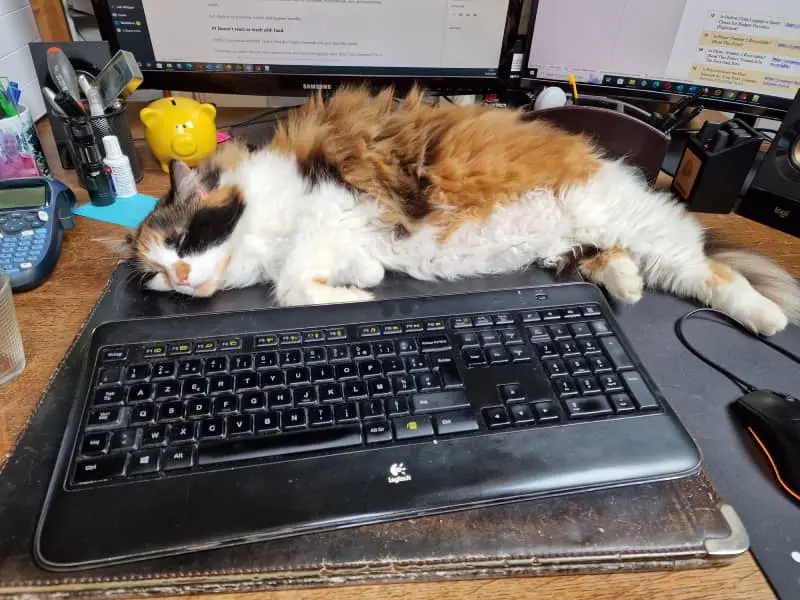
Sources
- Cats.com (Photo Credits)

